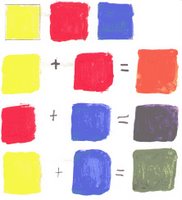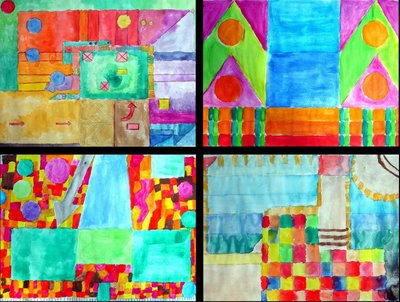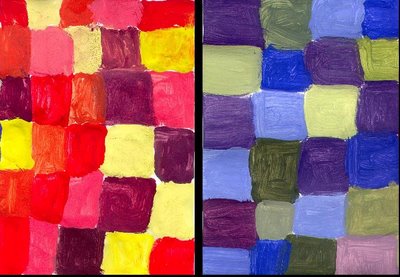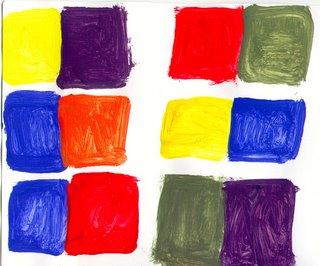I the C O L O R E - 1 ^ lesson
If we look around us we see that all things have a color contrary, we recognize objects not only because of their shape, but also through the colors. The colors are not a feature of the objects but the light that strikes them. So color is light .
If we pass a ray of light bia  nec, the sun, through a glass prism , breaks down, making visible the colors, the same 's ar co ba the no. This is because the different colors have different wavelengths and passing through the prism of glass are diverted in a different way, so we can see them separated.
nec, the sun, through a glass prism , breaks down, making visible the colors, the same 's ar co ba the no. This is because the different colors have different wavelengths and passing through the prism of glass are diverted in a different way, so we can see them separated.
the same thing happens in the rainbow instead of a prism with the raindrops.
The rainbow colors are: Red Orange Yellow Green Violet Blue . I COLORS PRIMARY AND SECONDARY
The yellow, the red el ' blue are co the re first but re . From their combination, two by two, we get the co the re if with by re , which are orange , the green the violet.
A further combination of a primary and a secondary color gives rise to tertiary colors. And so on.
AND NOW .... MANI IN PASTA!
MATERIALS TO BE USED:
A drawing pad n.4
Time: yellow, red, blue
A brush flat blade of medium thickness
A glass of water
of paper towels
Some small jars or plastic plates to put tempera
A sheet of newspaper to put under the drawing pad to avoid soiling the table
Let's get started!
We have the sheet vertically
With pencil and ruler draw 3 of 3 square inches on the top side of the paper. DONE? GOOD
now we do a lot of attention because of cans tempera ready do not need the addition of water.
take the color yellow and pour into a jar, dip the brush into the color and painted the first square.
We wash the brush and dry with the towel
We follow the same procedure with the red square for the second and blue for the third
Now, with the brushes (no first use a pencil), we realize table of c or the or r the primary and secondary.
With yellow draw and then color a square in the previous, next, leaving a 'space and color of a red .
In a pot put the yellow with a little 'red of , mix and we get the' orange. With this color painting, the third square.
Now we take the red and blue to paint a 'remaining row of squares. Mix the two colors and get the purple
Finally we take the yellow and blue for the last row of squares, and mix them we get the green
 Here is the table of c or l or r the created by primary and secondary GIACOMO of cl. III
Here is the table of c or l or r the created by primary and secondary GIACOMO of cl. III
If you are little and you can not even use the ruler you can download the card with the square ready to
"TEACHING THE CARDS ON LINE"








